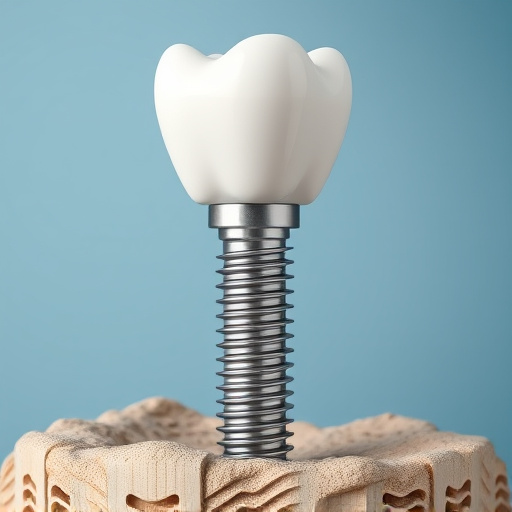The dental implants procedure involves multiple stages: consultation, surgical placement of titanium posts, osseointegration for bone healing, connection of an abutment, and final restorative work. Pre-procedure assessment ensures suitability, and anesthesia numbs discomfort. Healing, followed by osseointegration, leads to the completion of the dental implants procedure and restoration of oral health and smiles.
“Thinking about dental implants? This comprehensive guide offers a transparent look at what to expect during the entire dental implants procedure. From initial consultations to post-operative care, we break down the process step-by-step. We address common concerns, including discomfort management, before and after implant placement.
Learn the ins and outs of this life-changing treatment, empowering you with knowledge for a successful journey towards restored oral health.”
- Understanding the Dental Implants Procedure Step-by-Step
- What to Expect Before and After Implant Placement
- Common Questions Answered: Managing Discomfort During Treatment
Understanding the Dental Implants Procedure Step-by-Step

The dental implants procedure is a multi-step process designed to restore your oral health and smile effectively. It begins with an initial consultation where your dentist will assess your oral health, discuss your goals, and determine if dental implants are the best solution for you. If approved, the journey starts with surgical placement of the implant post, usually made of titanium, into the jawbone. This critical step acts as a synthetic tooth root, providing stability and longevity to the future dental restoration.
After the initial surgery, a period of osseointegration is required, allowing the bone to heal around the implant, creating a strong base. Once healed, a small connector called an abutment is attached to the implant. This component serves as a platform for the final restoration, which could be a dental crown, bridge, or denture. Throughout this process, regular dental cleanings and check-ups are essential to maintain optimal oral health around your new implants. Additionally, your dentist might recommend cosmetic fillings or crowns to ensure aesthetic harmony with your smile.
What to Expect Before and After Implant Placement

Before implant placement, your dentist will perform a comprehensive assessment to determine if dental implants are the best course of action for your oral health and aesthetic goals. This includes taking X-rays, performing physical exams, and discussing your medical history to ensure you’re a suitable candidate. During this process, your dentist will explain the procedure in detail, addressing any concerns or questions you may have. They’ll also provide information on what to expect during recovery, including potential side effects and when you can expect to resume normal activities.
After implant placement, it’s crucial to follow the aftercare instructions provided by your dental care team. This typically involves keeping the area clean through gentle rinsing or brushing as recommended, avoiding strenuous activities that may disturb the healing site, and maintaining a soft diet for the initial recovery period. As healing progresses, you can expect the implants to integrate with your jawbone, a process known as osseointegration, which solidifies the implant’s stability. This usually takes several months, after which restorative procedures like crown placement can be completed to finalize your dental implants procedure and restore your smile.
Common Questions Answered: Managing Discomfort During Treatment

Many patients have concerns about managing discomfort during a dental implants procedure. It’s natural to feel anxious, but understanding what to expect can help ease fears. While every patient experiences pain differently, your dentist will use local anesthesia to numb the area around the implant site before starting the procedure, significantly reducing any sensation of pain.
After the initial numbing wears off, you may experience some mild to moderate discomfort for a few days as the implant heals and integrates with your jawbone. Your dentist can prescribe medications or suggest over-the-counter pain relievers to manage this discomfort effectively. Remember that comprehensive dental care involves not just treating problems but also ensuring patient comfort throughout every step of the process, including follow-up dental cleanings and dental fillings if needed.
Dental implants offer a reliable and long-lasting solution for missing teeth, enhancing both oral health and overall quality of life. By understanding the detailed procedure, from initial consultation to implant placement and post-operative care, patients can better navigate this transformative journey. Through proper preparation and addressing common concerns, individuals can confidently embrace the benefits of dental implants, restoring their smile and chewing function for years to come.














